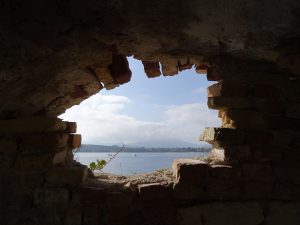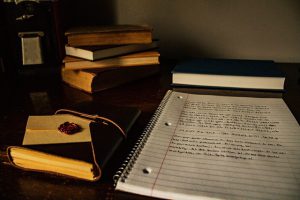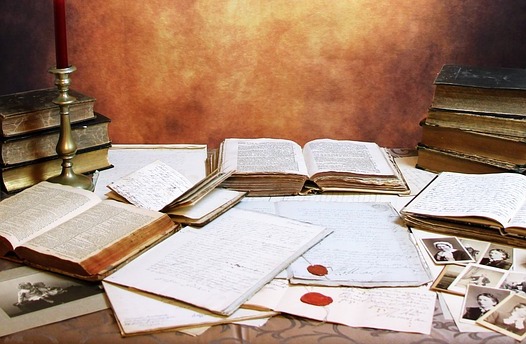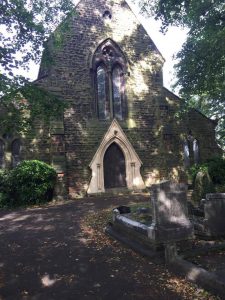 Sometimes, no matter what you try, your ancestor remains elusive. Genealogists call this hitting a brick wall. Today I want to give you some Genealogy Brick Wall Tips to help you with that stumbling block in your research. I have personally hit a number of brick walls in my research, and have had to stop to process it to establish what is happening in order to break through my genealogy brick wall. Here are some of my genealogy brick wall solutions.
Sometimes, no matter what you try, your ancestor remains elusive. Genealogists call this hitting a brick wall. Today I want to give you some Genealogy Brick Wall Tips to help you with that stumbling block in your research. I have personally hit a number of brick walls in my research, and have had to stop to process it to establish what is happening in order to break through my genealogy brick wall. Here are some of my genealogy brick wall solutions.
Step 1 - What is your problem?
Firstly, you need to identify what your exact genealogical problem is. You need to establish what the issue is and what you want to find out. Once you have established this, you need to write out your research problem that concludes with a clear research question.Step 2 - What are the known facts?
What do you already know about this person? What are you missing? You need to go back and review your research to check for information. Go back a generation and check the individual's spouse and children - remember in genealogy we are working backwards so to go back a generation you look at descendants, not ancestors. Do you have comprehensive and complete information about these people?
Is the information you have on these people original source material, not just indexes or transcriptions?
So often people will think they have found their ancestor but due to an error in an index or transcription, they have found the wrong person.
You need to go back and review your research to check for information. Go back a generation and check the individual's spouse and children - remember in genealogy we are working backwards so to go back a generation you look at descendants, not ancestors. Do you have comprehensive and complete information about these people?
Is the information you have on these people original source material, not just indexes or transcriptions?
So often people will think they have found their ancestor but due to an error in an index or transcription, they have found the wrong person.
- Create a Timeline - this process will allow you to identify any gaps in what you have.
- Write down a clear timeline of dates and information for the individual
- Do this for the people surrounding them e.g. spouse, children
- What inconsistencies have you found?

Fanny in 1950 - Different maiden name - a number of years ago I thought I had found my great grandmother Fanny. I found a Fanny Johnson married a Samuel Stokes and was ready to assign her to my family when my aunt said no I'm sure grandma was a Richardson. Her father was a lay preacher. I went back to the marriage records to search and found a Fanny Richardson married a Samuel Stokes. I had nearly made a basic error of not checking and rechecking. I was able to confirm this when I ordered my grandmother Dorcas's birth certificate - original source material - which gave her mother's maiden name as Richardson.
- An age discrepancy - you may find John Smith b.1852 and John Smith b.1862 and think they are the same person but through a thorough investigation, you find that they are actually uncle and nephew. This is very easy to do as often children were named after a favourite aunt, uncle, parent, grandparent. It is nothing unusual to find cousins with the exact same name and similar birth years!
- Errors in records - you can get transcription errors, where a person's name has been misspelt or date of birth inverted. A good example of this is my children have a German surname. In 1800's Australia there was not the emphasis on spelling that we have today. The variations I have found on this surname have been wide and varied.

Step 3 - Have you found all the available records for your ancestor?
If not, you need to widen your search. The more documents you have for an individual the less likely misidentification will occur.- Have you checked:

- BMD Records - have you got an actual certificate?
- Census Records - don't just rely on transcriptions, find the original census page.
- Wills and Probate Records
- Immigration Records
- Newspapers
- Property Records
- Maps
- Have you researched the FAN (Family, Associates, Neighbours) Club?
- Ask yourself these questions:
- Who did they live near?
- Who signed as witnesses at christenings or weddings?
- Who did they worship with?
- Who did they work with?
- Who did they live near?
- Who did they buy property from or sell property to?
- Ask yourself these questions:
- Search

- Repositories - such as archives, libraries, churches, genealogy societies. These places often have physical holdings of the documents.
- Professional Genealogists - these are people, who for a fee, will look up original documents for you. This enables you to obtain records in areas geographically distant to yourself.
- Online - Ancestry, Find My Past, Government record sites.
- Books - is your ancestor in a book about early pioneers?
- Ask for help - someone somewhere will have knowledge that can help you
- Online genealogy forums and message boards e.g. Rootschat
- Facebook groups
- Genealogical Societies
- Share your family tree online
- Start your own family history blog
- Professional Genealogists
Step 4 - What are the likely outcomes of your search?
You need to consider any ethical implications of your search - sensitive material such as the proverbial "skeleton in the cupboard" may cause someone harm. You need to understand the implications this research may have on somebody who is alive. Are they going to be embarrassed or be harmed by the information you have found? Some examples of issues that may be upsetting - abortions, criminal history, illegitimate children.What genealogical problems can I use these steps for?

- Breaking Through my Brick Wall
- Looking for a Birth or Death Record
- Looking for Living Relatives
- Uncovering Hidden Histories
- Where is my Ancestor Hiding

Thank you so much for these tips! I have hit several brick walls when building my family tree on both sides of my family. One of my brick walls came down recently because I took a DNA test through Ancestry and then was able to go out on the site to see my connections. I am so thankful for that because I have finally connected. I found out they have been looking for me for several years – just as I was looking for them! I love building my family tree through research. Thanks again for your suggestions.
Regards,
Yvette
Hi Yvette
That is so exciting that you found family that was looking for you by doing an Ancestry – Test Sale DNA – Link ” rel=”noopener” target=”_blank”>Ancestry DNA test. That is a great outcome for you all. I am glad that you find my tips to break down genealogy brick walls have provided you some assistance.
” rel=”noopener” target=”_blank”>Ancestry DNA test. That is a great outcome for you all. I am glad that you find my tips to break down genealogy brick walls have provided you some assistance.
Regards,
Megan
You make me smile, Megan, when you mention cousins with identical names. This is not only a thing of the past. My cousin Giulio (male equivalent name to Italian female version Giulia) is 6 months younger than me and of course carries the same surname as my maiden surname. How confusing is that! Not to talk about transcription errors. Admittedly, this is not so much an error of transcription, but an error by my grandfather, who during the war when my mum was born, had to walk a long way to the registry office whilst surrounded by German enemy troops, and when he got there, he registered my mum as Laura instead of Paula. My mum has been a Laura to this day, of course – and no much damage there. But I can imagine how confusing again it may be for people trying to build their family tree, when faced before such spelling errors.
Thank you for the useful tips, Megan!
Hello Giulia
How confusing for you and your cousin! I suppose it would still occur to this day with many family passing a name down through a first born son. My son’s middle name is Charles, his father’s middle name is Charles, his grandfather’s middle name is Charles, his great-grandfather’s first name was Charles – so some traditions do last through they centuries.
Funny you mention your mum being a Paula/Laura. A good friend of mine in high school’s middle name was supposed to be Diana but when her dad registered it he spelt it Dinah! So errors do occur even from those close to the individual.
I hope you continue to enjoy your family history!
Regards,
Megan
Now this is a subject that is really my top interest being a fellow genealogist and i know only too well about encountering brick walls in your research. As we gain experience we eventually learn what to look for and from what i have read in your post you have nailed a lot of the key items. Passing this knowledge onto others is quite uplifting and your post has done that well. I look forward to reading other posts you have done so continue the good work.
Regards Andrew.
Hi Andrew
Thank you for taking the time to read comment on this post. You feedback is much appreciated especially from a fellow genealogist. I write with the hope that a post that imparts helpful information to others particularly people just coming into the fold, so to speak. I don’t want to overload them with too much information but I want to give them easy to read, helpful instructions. Thank you for letting me know that I’ve managed just that.
Regards,
Megan